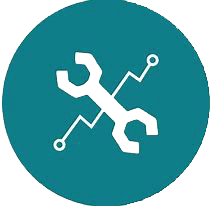United States Freight And Logistics Market

United States Freight and Logistics Market, By End User (Manufacturing, Oil & Gas, Mining & Quarrying, Wholesale & Retail Trade); By Logistics Function (Courier, Express, and Parcel (CEP), Freight Forwarding, Freight Transport, Warehousing & Storage), Trend Analysis, Competitive Landscape & Forecast, 2019–2031
- Published Date: February 2025
- Report ID: BWC25093
- Available Format: PDF
- Page: 140
Report Overview
E-commerce growth, consumer demand for fast delivery, technological advancements, infrastructure investments, and logistics outsourcing are expected to drive United States Freight and Logistics Market during the forecast period between 2025 and 2031.
United States Freight and Logistics Market – Industry Size, Trends & Forecast Report, 2031
United States Freight and Logistics Market size was estimated at USD 1.11 trillion in 2024. During the forecast period between 2025 and 2031, United States Freight and Logistics Market size is projected to grow at a CAGR of 4.13% reaching a value of USD 1.48 trillion by 2031. The United States Market for Freight and Logistics is propelled by e-commerce growth, rising consumer expectations for rapid delivery, technological advancements like automation and AI, significant infrastructure investments, and a trend towards logistics outsourcing. Additionally, the expansion of global trade necessitates robust logistics networks, while increasing environmental concerns drive the adoption of sustainable practices. These combined factors contribute to the dynamic and evolving nature of the U.S. Freight and Logistics Market, ensuring its continual growth and adaptation to new demands.
Freight and Logistics – Overview
Freight and logistics market encompasses transportation, warehousing, and distribution of goods. It is integral to global trade, relying on complex supply chains to ensure the efficient movement of products. Key components include road, rail, air, and maritime transport. The industry is driven by technological advancements, e-commerce growth, and evolving consumer demands for rapid delivery. Sustainability practices and regulatory compliance also shape operations. Overall, it plays a critical role in supporting economic activity and connecting markets worldwide.
United States Freight and Logistics Market
Growth Drivers
Growing Adoption of Advanced Technologies
Technological advancements are a significant growth driver for United States Freight and Logistics Market, enhancing efficiency and reducing costs. The rising adoption of innovative technologies, including Artificial Intelligence (AI), Internet of Things (IoT), blockchain, and autonomous vehicles, are revolutionizing supply chain operations. Advanced technologies enable real-time tracking, improved warehouse management, and streamlined customs processes. Automation and digital twins further optimize logistics, while 5G and cloud computing support seamless data exchange. Embracing these advancements ensures competitive advantage and meets evolving consumer demands for faster, more reliable delivery services.
Challenges
Regulatory Challenges
United States Freight and Logistics Market faces significant regulatory challenges, including compliance with complex federal, state, and international regulations. For instance, the Federal Motor Carrier Safety Administration (FMCSA) mandates strict driving time limits and safety inspections to prevent driver fatigue and ensure vehicle integrity. Environmental regulations from the Environmental Protection Agency (EPA) require logistics companies to limit vehicle emissions and use cleaner fuels. Additionally, customs procedures and trade policies add layers of complexity, increasing operational costs and causing potential delays. These regulatory hurdles demand continuous adaptation and investment, impacting overall logistics efficiency.
Impact of Escalating Geopolitical Tensions on United States Freight and Logistics Market
Escalating geopolitical tensions could significantly impact the growth of United States Freight and Logistics Market by disrupting global supply chains, increasing freight rates, and causing delays. Conflicts and trade disputes lead to rerouted shipping paths, higher fuel prices, and increased insurance costs. For example, the recent announcements of reciprocal tariffs by the President of United States raise shipping costs and forced companies to reconfigure supply chains. Additionally, regional conflicts, such as those in the Strait of Hormuz, affect critical shipping routes, leading to longer transit times and higher operational expenses. These factors collectively strain logistics operations and elevate costs for businesses and consumers alike.
United States Freight and Logistics Market
Segmental Coverage
United States Freight and Logistics Market – By End User
Based on end user, United States Freight and Logistics Market is divided into Manufacturing, Oil & Gas, Mining & Quarrying, and Wholesale & Retail Trade segments. The wholesale & retail trade segment is the largest end user in United States Freight and Logistics Market. The segment’s market dominance is driven by robust growth in retail sales and significant investments in logistics infrastructure, particularly to support the expanding e-commerce sector. The manufacturing segment is the fastest-growing, propelled by the adoption of advanced technologies and federal initiatives aimed at enhancing supply chain resilience. Other segments, such as oil and gas, mining and quarrying, also contribute to the market's diversity and overall growth.
United States Freight and Logistics Market – By Logistics Function
United States Freight and Logistics Market by logistics function is divided into Courier, Express, and Parcel (CEP), Freight Forwarding, Freight Transport, and Warehousing & Storage segments. The freight transport segment is the largest logistics function in United States Freight and Logistics Market. This segment encompasses various modes of transportation, including road, rail, air, and sea, with road freight being the predominant mode. Significant infrastructure investments, such as the Bipartisan Infrastructure Law allocating USD 350 billion for highway programs, have bolstered this segment's growth. Additionally, the integration of digital technologies and automation has enhanced operational efficiency in the Freight Transport sector.
Competitive Landscape
Major companies operating in United States Freight and Logistics Market include UPS, FedEx, DHL, XPO Logistics, C.H. Robinson, J.B. Hunt, Schneider National, YRC Worldwide, Old Dominion Freight Line, Swift Transportation, and Estes Express Lines. To further enhance their market share, these companies employ various strategies, including mergers and acquisitions, partnerships, joint ventures, license agreements, and new product launches.
Scope of the Report
|
Attributes |
Details |
|
Years Considered |
Historical Data – 2019–2031 |
|
Base Year – 2024 |
|
|
Estimated Year – 2025 |
|
|
Forecast Period – 2025–2031 |
|
|
Facts Covered |
Revenue in USD Trillion |
|
Market Coverage |
United States |
|
Product/ Service Segmentation |
End User, Logistics Function |
|
Key Players |
UPS, FedEx, DHL, XPO Logistics, C.H. Robinson, J.B. Hunt, Schneider National, YRC Worldwide, Old Dominion Freight Line, Swift Transportation, Estes Express Lines |
By End User
-
Manufacturing
-
Oil & Gas
-
Mining & Quarrying
-
Wholesale & Retail Trade
By Logistics Function
-
Courier, Express, and Parcel (CEP)
-
Freight Forwarding
-
Freight Transport
-
Warehousing & Storage
- Research Framework
- Research Objective
- Product Overview
- Market Segmentation
- Executive Summary
- United States Freight and Logistics Market Insights
- Industry Value Chain Analysis
- DROC Analysis
- Drivers
- Increasing Trade Volume
- E-commerce Expansion
- Technological Advancement
- Restraints
- Infrastructure Limitations
- Rising Fuel Costs
- Regulatory Challenges
- Opportunities
- Trade Liberalization and Agreements
- Geographic Advantage as a Transshipment Hub
- Challenges
- Workforce Shortages
- Environmental Regulations
- Drivers
- Technological Advancements/Recent Developments
- Regulatory Framework
- Porter’s Five Forces Analysis
- Bargaining Power of Suppliers
- Bargaining Power of Buyers
- Threat of New Entrants
- Threat of Substitutes
- Intensity of Rivalry
- United States Freight and Logistics Market: Marketing Strategies
- United States Freight and Logistics Market: Pricing Analysis
- United States Freight and Logistics Market Overview
- Market Size & Forecast, 2019–2031
- By Value (USD Billion)
- By Volume (Million Tons)
- Market Share & Forecast
- By End User
- Manufacturing
- Oil & Gas
- Mining & Quarrying
- Wholesale & Retail Trade
- By Logistics Function
- Courier, Express, and Parcel (CEP)
- Freight Forwarding
- Freight Transport
- Warehousing & Storage
- By End User
- Market Size & Forecast, 2019–2031
- Competitive Landscape
- List of Key Players and Their Offerings
- United States Freight and Logistics Market Share Analysis, 2024
- Competitive Benchmarking, By Operating Parameters
- Key Strategic Developments (Mergers, Acquisitions, Partnerships)
- Impact of Escalating Geopolitical Tensions on United States Freight and Logistics Market
- Company Profiles (Company Overview, Financial Matrix, Competitive Landscape, Key Personnel, Key Competitors, Contact Address, Strategic Outlook, SWOT Analysis)
- UPS
- FedEx
- DHL
- XPO Logistics
- C.H. Robinson
- J.B. Hunt
- Schneider National
- YRC Worldwide
- Old Dominion Freight Line
- Swift Transportation
- Estes Express Lines
- Other Prominent Players
- Key Strategic Recommendations
- Research Methodology
- Qualitative Research
- Primary & Secondary Research
- Quantitative Research
- Market Breakdown & Data Triangulation
- Secondary Research
- Primary Research
- Breakdown of Primary Research Respondents, By Region
- Assumptions & Limitations
- Qualitative Research
*Financial information of non-listed companies can be provided as per availability.
**The segmentation and the companies are subject to modifications based on in-depth secondary research for the final deliverable.
List of Figures
Figure 1 United States Freight and Logistics Segmentation
Figure 2 United States Freight and Logistics Market Value Chain Analysis
Figure 3 Company Market Share Analysis, 2024
Figure 4 United States Freight and Logistics Market Size, By Value (USD Billion), 2019–2031
Figure 5 United States Freight and Logistics Market Share, By End User, By Value, 2019–2031
Figure 6 United States Freight and Logistics Market Share, By Logistics Function, By Value, 2019–2031
Figure 7 United States Freight and Logistics Market Share, By End User, By Value, 2019–2031
Figure 8 United States Freight and Logistics Market Share, By Logistics Function, By Value, 2019–2031
Figure 9 United States Freight and Logistics Market Share, By End User, By Value, 2019–2031
List of Tables
Table 1 United States Freight and Logistics Market Size, By Value (USD Billion), 2019–2031
Table 2 United States Freight and Logistics Market Share, By End User, By Value, 2019–2031
Table 3 United States Freight and Logistics Market Share, By Logistics Function, By Value, 2019–2031
Table 4 United States Freight and Logistics Market Share, By End User, By Value, 2019–2031
Table 5 United States Freight and Logistics Market Share, By Logistics Function, By Value, 2019–2031
Table 6 United States Freight and Logistics Market Share, By End User, By Value, 2019–2031
Table 7 Deutsche Post DHL Group Company Overview
Table 8 Deutsche Post DHL Group Financial Overview
Table 9 FedEx Corporation Company Overview
Table 10 FedEx Corporation Financial Overview
Table 11 Mainfreight Limited Company Overview
Table 12 Mainfreight Limited Financial Overview
Table 13 United States Post Ltd. Company Overview
Table 14 United States Post Ltd. Financial Overview
Table 15 Toll Group Company Overview
Table 16 Toll Group Financial Overview
Table 17 Linfox Logistics Company Overview
Table 18 Linfox Logistics Financial Overview
Table 19 CEVA Logistics Company Overview
Table 20 CEVA Logistics Financial Overview
Table 21 DB Schenker Company Overview
Table 22 DB Schenker Financial Overview
Table 23 Kuehne + Nagel Company Overview
Table 24 Kuehne + Nagel Financial Overview
Table 25 DSV A/S Company Overview
Table 26 DSV A/S Financial Overview
Table 27 XPO Logistics Company Overview
Table 28 XPO Logistics Financial Overview
Market Segmentation
To request a free sample copy of this report, please complete the form below.
We value your investment and offer free customization with every report to fulfil your exact research needs.
Frequently Asked Questions (FAQs):
RELATED REPORTS
WHY CHOOSE US
-

24/7 Research Support
Get your queries resolved from an industry expert. Request for a free product review before report purchase.
-

Custom Research Service
Ask the Analyst to customize an exclusive study to serve your research needs
-

Quality & Accuracy
Ask the Analyst to customize an exclusive study to serve your research needs
-

Data Visualization
As the business world is changing dynamically every day. We need to stay pin point in relation to data management and optimum data utilization
-

Information security
We never share your personal and confidential information. Your personal information is safe and secure with us.


